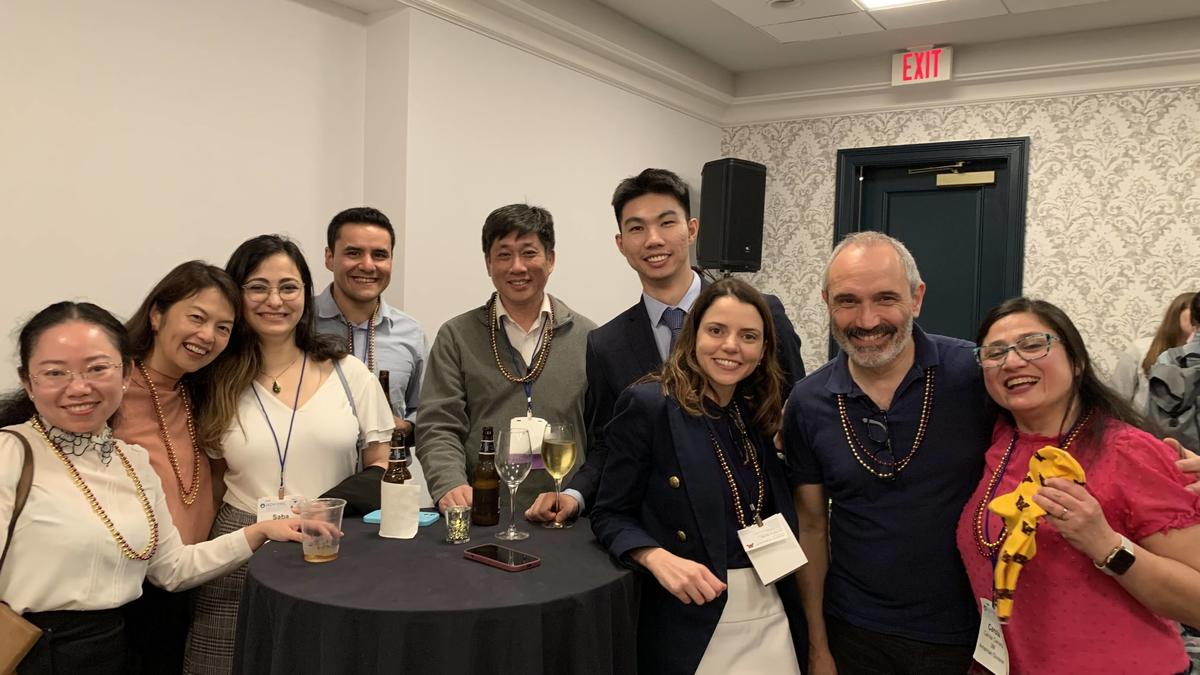Over 50 School of Dentistry members showcase expertise at AADOCR

Learners and faculty engaged in research and collaboration at this year’s Annual Association for Dental, Oral and Craniofacial Research General Session in New Orleans, Louisiana.
The AADOCR’s General Session, held jointly with the International Association of Dental Reearch, brings together members from across the country and the world to share research updates, collaborate and learn from one another. The event includes poster sessions, research presentations and gatherings–including the University of Minnesota’s Reception. Hosted by Kristin Artinger, PhD, Associate Dean for Research and Discovery, the reception invited friends, alumni and members of the School of Dentistry community to network and enjoy one another’s company.
“It’s an important opportunity for our students to present their work, get feedback from the community and network,” Artinger reflected. “Our students and faculty represent our school so well.”
More than 50 individuals represented the School of Dentistry at the conference with posters or presentations.

Bruno Lima, DDS, PhD, assistant professor of basic sciences, was represented on three posters–one with a DDS/PhD student on how bacteria regulate proteins, one on collagenase production and one in collaboration with the MDRCBB on reducing failure rates in composites. In addition to his research, Lima helped to organize a symposium for junior investigators in the microbiology and immunology research group to present their research. He also attended several events focused on diversity, equity and inclusion in the dental research realm.
“These meetings are a great opportunity to stay involved outside of traditional research, develop my career and network,” said Lima, who has been a member of AADOCR for sixteen years. “This community has helped me a lot, and now is my chance to help others navigate their career paths.”
Reflecting on the sense of belonging the conference left him with, Lima expressed the unique nature of this conference as a mix of clinical, translational and basic science research. “It’s a nice way to step outside our comfort zone and see what others are doing, and how we can incorporate their work into our own.”
Multiple students also attended the conference and presented their research.
Lauren Kress, DDS/ PhD candidate, presented a poster from her Student Summer Research Program on how CD69 interacts with Calprotectin to reduce inflammation in periodontal disease. She enjoyed presenting during her first time at the conference, as well as networking with others. “Attending the conference opened my eyes to the wide variety of research that is being done in the area of oral health and disease, and I feel a renewed sense of excitement and energy for basic science that I hope to translate into my own research,” she said.
Nicholas Fischer, PhD, DDS ’25, presented on degradation of dental materials. Because of his desire to pursue dental research after completing his PhD, Fischer appreciated talking with mentors and receiving advice. “I was able to see old friends too, many with connections to the school,” he said.
Boluwatife Olu Afolabi, second-year PhD candidate, presented at the mini-symposium for young investigators and gave a poster presentation at IADR, both on “The Interplay between Aryl Hydrocarbon Receptor and Calprotectin in Head and Neck Cancer.”

The conference was “a great space to meet and network with some other incredible scientists I have only read about,” Afolabi reflected. “Following the feedback I got at AADOCR/IADR 2024, I am already designing new experiments to answer some more questions and hopefully move a step closer to understanding the interplay between AHR and calprotectin in HNSCC.”
Kristina Astleford-Hopper, DDS/PhD ’26, presented her research on the epigenetic factor lysine specific demethylase 1 and its role in regulating osteoclast differentiation.
“Not only did I gain more knowledge in many areas of dentistry but I also made many new connections with other researchers and students,” she reflected. “One of the best things about presenting at IADR is you meet people in many different fields who can give you an outside perspective on your work and allow you to think of things in a different way. This helps provide me with new methods or techniques I can use in my research that will ultimately progress my work and help it become stronger.”
Though they attended the conference for different reasons and with different goals, faculty and learners enjoyed their experiences and came back refreshed and excited to explore their research from a new perspective.
